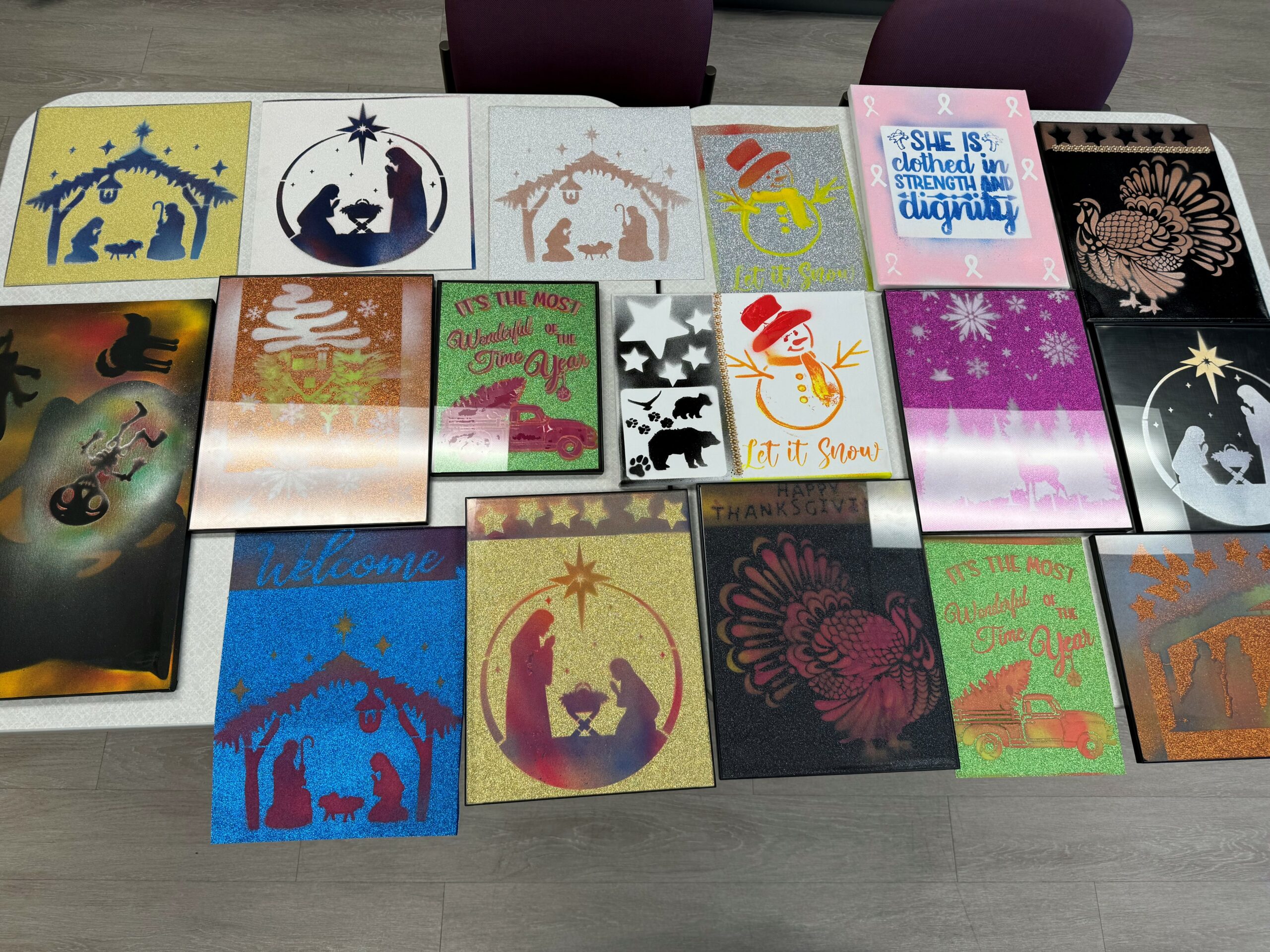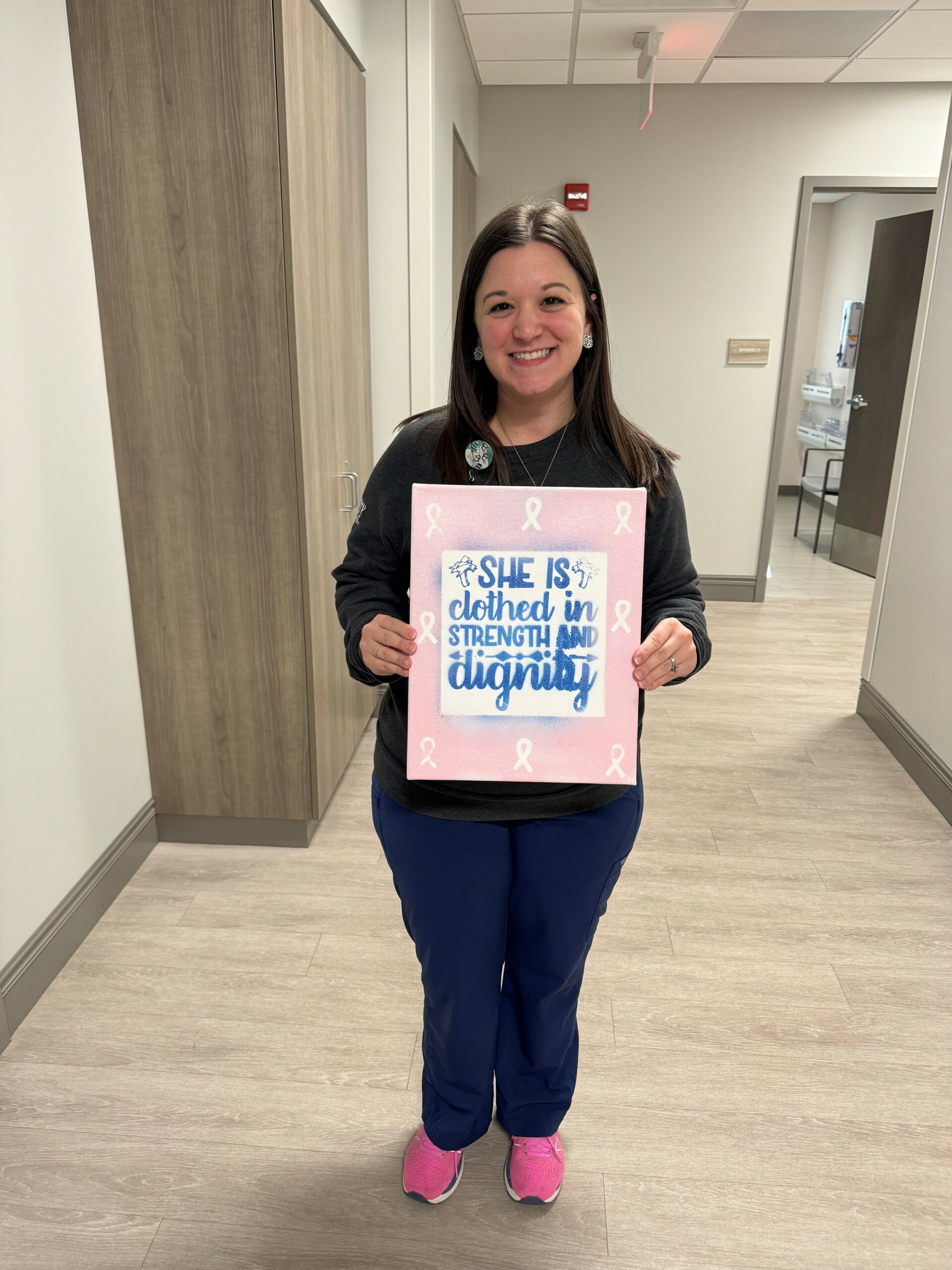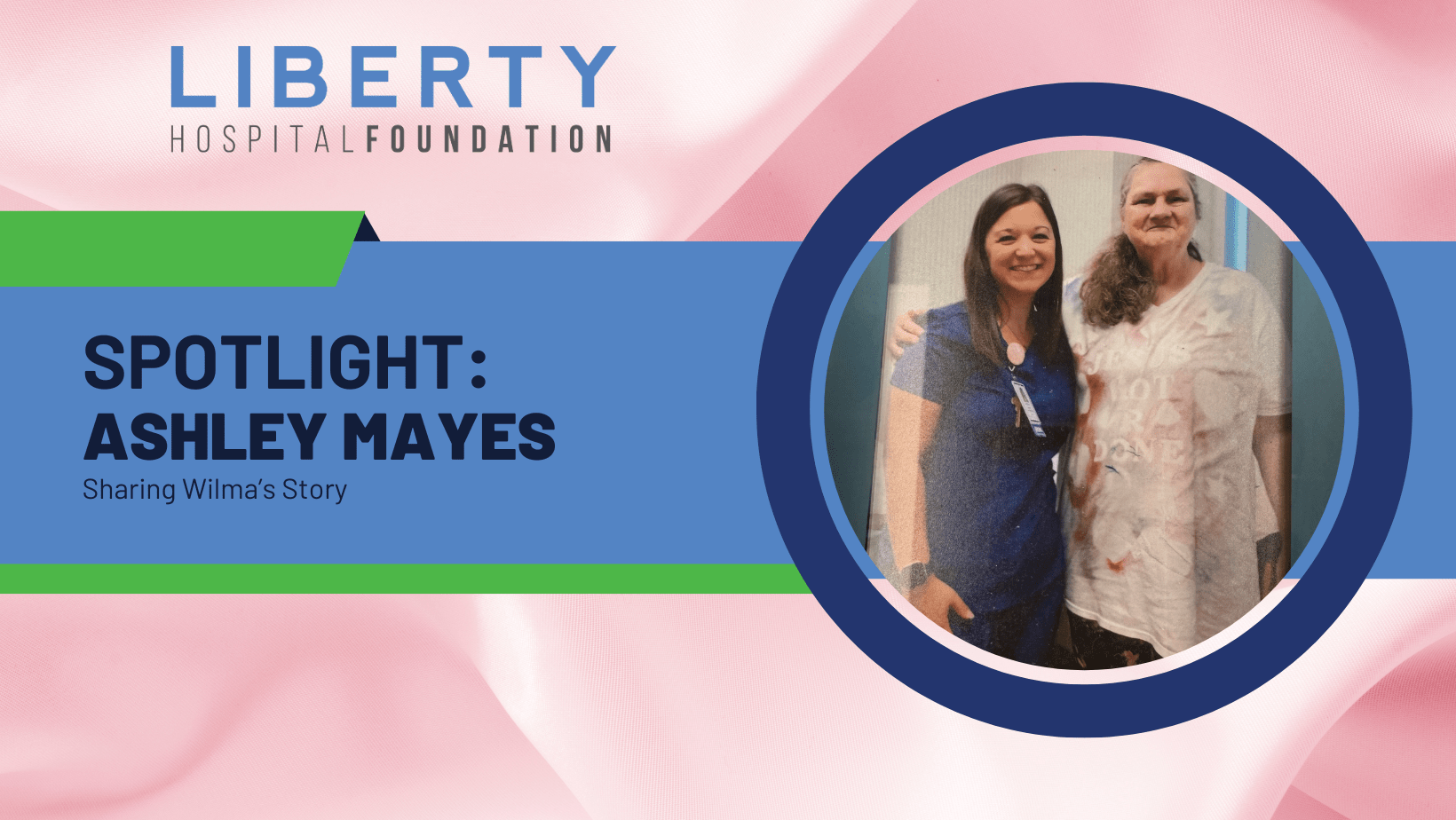Sharing Wilma’s Story

Wilma’s Artwork
Ashley was a nurse navigator for Wilma starting in 2022 when she came to the Breast Care Center for a biopsy. The results came back with a high-risk lesion. After follow-up imaging, she came back to have another biopsy. When she drove in, Wilma was able to use a gas card from the Foundation’s Patient Assistance Program. Shortly after, Wilma was diagnosed with breast cancer. During her surgery, follow-ups and care at Liberty Hospital, Wilma created dozens of paintings that she gave to her surgeons, nurses and staff at the Breast Care Center. Wilma strictly does this for fun; she does not ask anything in return, it is her way of spreading joy and love. Ashley has developed a very special relationship with Wilma throughout her treatment and after; Wilma often calls Ashley to tell her that she loves her and is thinking about her. Over the course of her surgery, follow-ups, and treatment, she started bringing in bags that had framed art for all of the staff. “She has always been so grateful for the care she has gotten here,” Ashley said. “Even through other health concerns, she said she has chosen to come back to Liberty because all of the staff has taken such great care of her.”
The Patient Assistance Program through the Liberty Hospital Foundation supports patients like Wilma, giving individuals and families “one less worry” when going through difficult times.
More About Ashley

Ashley with Wilma’s Artwork
Ashley works out of the Breast Care Center. As the navigator, Ashley starts working with patients when there is a potential or suspicion that the individual could have cancer and needs a biopsy. Ashley works on follow-ups to ensure scheduled procedures were completed. She calls patients with their pathology and goes through those results, and if it is concerning, she helps them navigate their cancer journey: setting up appointments, making sure it’s done in a timely fashion, and completes follow-ups to allow for surgery or treatment schedules. She continues to care for patients after surgery or treatments making sure that the patient has the support they need. Ashley can link patients to various support groups and resources for patients who inquire, helping to treat the mental wellness of patients in tandem with education and answering questions.
Ashley started her career at Liberty in nursing school, she completed her senior capstone on the surgical oncology floor. A few years after completing her degree, Ashley started working at Liberty Hospital on the surgical oncology floor, now working as a nurse navigator ever since the position first opened. “Liberty Hospital still has a small-town feel. I grew up in Cameron, so I appreciate that,” Ashley notes. “Liberty is a big enough to offer a lot of resources but small enough that when I walk down the hall, I know a lot of people and they know me. I like that personal feel.”
Ashley is one of the Foundation’s biggest advocates as a nurse navigator. She makes sure that patients know about the TreeHouse, as many patients she knows have stayed there before and during treatment. “A lot of our patients travel hours from here. When you start talking about radiation therapy, the travel can be hard on individuals. So many of our oncology patients are a large demographic who use the TreeHouse and it adds a personal touch to patient care.”
About Breast Cancer, from Ashley’s Field of Work
With the new Breast Cancer Center at Liberty Hospital, the most immediate positive change was the ability to see more patients with more equipment. “We have the opportunity to do mammograms on women and provide surgery and treatment closer to home for individuals,” Ashley said. There have been a lot of updates in technology that have helped pinpoint patient care more efficiently. Ashley explains that, “when we get certain pathologies back, based on the latest research on biomarkers, we can know a personalized plan for imaging, treatment or surgery in different orders depending on each individual’s needs.”
Ashley also explained a typical journey for a patient at the Breast Care Center. “Most patients start out as a mammogram needing imaging. From here, the imaging either denotes suspicion or it looks fine. Once a suspicious screening is denoted, we schedule a biopsy and review the pathology. A majority of breast cancer’s first step is surgery. But there are certain pathologies that would need chemotherapy or systemic therapy first. After surgery, the patient would see the oncologist, and maybe a radiologist. From here they might go from chemotherapy to radiation and perhaps endocrine therapy.” One large misconception, Ashley explained, is that not every cancer patient needs chemotherapy, “now there’s testing available that shows not every patient needs this course of treatment, it is pretty mind blowing!” “However,” says Ashley, ” taking chemotherapy and radiation treatment can cut possible reoccurrence in half in some instances, which is amazing in terms of technological advancements.”
Thank you, Ashley, for sharing your experience with patients, your journey as a nurse navigator, and insight on the journey of cancer patients.






